Stop press! CKHH receives a nomination for an award in the ‘Outstanding Contribution to the Community’ category at CCCU. So well done Claire and Diane this is richly deserved for our great team.
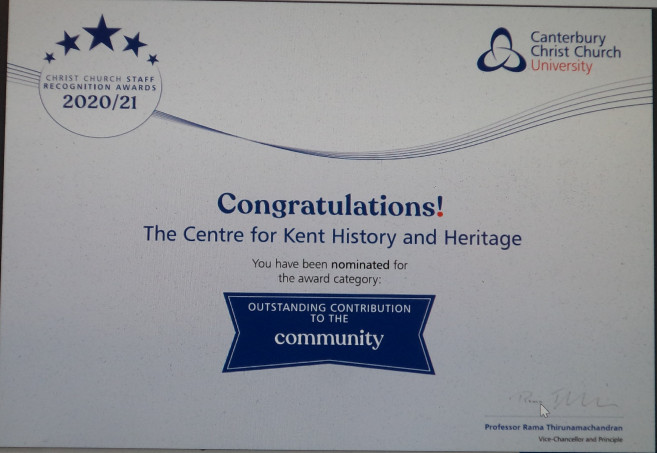
Having given a talk this morning to a very engaged and engaging audience as part of the Canterbury Festival’s pre-Festival History Day on ‘reading salvation’ in the late medieval parish church, which featured wall paintings from Trotton and Hardham in Sussex, St Thomas’s parish church in Salisbury, and plenty of these paintings from Kent, especially at Brook, Brookland and Faversham, I’ll give a last reminder of ‘Kentish Saints and Martyrs’ that begins this Saturday.
If you are a newcomer to the Centre’s blog, as part of Becket 2020/1 the CKHH, working with Canterbury’s parish churches and St Thomas’ RC, devised a week-long programme of talks on various aspects of ‘Kentish Saints and Martyrs’, beginning on Saturday 18 September in St Paul’s parish church, at 7.30pm. I’m delighted that Dr Sarah James will be providing ideas about saints and cults to provide a context for the specific saints who feature next week. The speakers and saints who follow are Dr Diane Heath on Saintly Bishops at St Martin’s church on Monday, Dr Ralph Norman on St Anselm at St Paul’s church on Tuesday, me on Early Medieval Female Cults at St Mildred’s on Wednesday, Dr Doreen Rosman on 16th-Century Martyrs at St Dunstan’s on Thursday, me again on Minor and Failed Cults at St Peter’s parish church on Friday, culminating with Dr Rachel Koopmans on Saturday at St Thomas’ RC church(hall) on The Role of Clothing in Becket’s Cult. We are exceedingly fortunate to have Rachel as one of our speakers because she will be flying in from Toronto next week to spend much of the autumn working with Leonie Seliger in Canterbury Cathedral’s stained glass studio where they will be research the stained glass window that was at the BM Becket exhibition in the spring/summer this year.
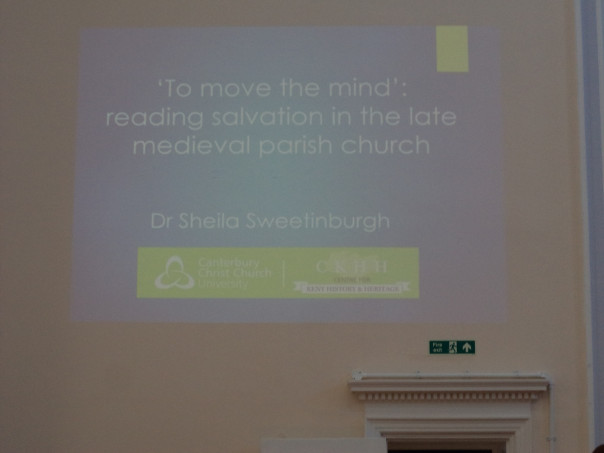
All the talks will take place at 7.30pm, do NOT require booking – just come along, and are in aid of the various church funds (voluntary donation or similar). Consequently, if you are free and this sounds interesting, we would be delighted to see you. Please do bring a face covering unless exempt for the sake of vulnerable people. For further details, please see the various church websites and https://blogs.canterbury.ac.uk/kenthistory/kent-history-in-the-news-talks-exhibitions-and-other-events/
The week after, the Centre is delighted to be partnering the Agricultural Museum Brook on Tuesday 28 September at 6.45pm. We are very fortunate that Professor Catherine Richardson, a well-known expert on the early modern household, will be speaking on her collaborative work with the Weald and Downland Museum. Space in St Gregory’s Centre is limited for those who want to come in person, so please do book at: https://www.canterbury.ac.uk/arts-and-culture/event-details.aspx?instance=353806 Please note that this free, public event will also be livestreamed and this is the joining url: https://teams.microsoft.com/l/meetup-join/19%3ameeting_NzU2NzQ4N2QtMGU2MS00ODgyLWEyYzAtN2QwMTdiZGVmYmY0%40thread.v2/0?context=%7b%22Tid%22%3a%220320b2da-22dd-4dab-8c21-6e644ba14f13%22%2c%22Oid%22%3a%225438ffb7-ff66-44f6-9ccf-cf504309571b%22%2c%22IsBroadcastMeeting%22%3atrue%7d&btype=a&role=a
The livestreaming does not require booking, just join as you would for a Teams Live Event, and if you don’t have Teams on your device, join anonymously on the web.
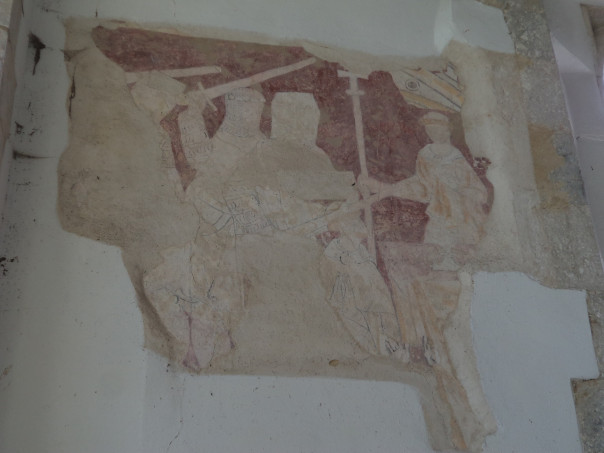
It is feasible by then that Maritime Kent through the Ages will be out with Boydell and if you still want to take advantage of the pre-publication discount, please do get in touch with the CCCU Bookshop at: https://bookshop.canterbury.ac.uk/ Moreover, we have almost finalised the details of the public, free conference to mark this which will be on Saturday 6 November. All being well, the conference, with Kent Archaeological Society (KAS), will be both in person at the CCCU Canterbury campus – booking required through Arts and Culture at artsandculture@canterbury.ac.uk and online as it will be livestreamed – that joining url will be in the blog next month, please watch out for it.
Additionally, next month Dr Claire Bartram is the lead for the Centre’s online lecture series as part of the Canterbury Festival. More details and the various joining urls will be posted in the blog nearer the time, but I thought I would just outline these talks. We will be starting on Tuesday 19 October on Roman Canterbury and its People by Dr Jake Weekes (CAT) and Lisa Duffy, Wednesday 20th will be Diane and Medieval Animals Talking, with Thursday 21st comprising a film and ‘in conversation’ on British Cherry Blossom with Dr Sam Vale. Then the following week you can enjoy on the Tuesday Dr Susan Civale and Romantic Dover, Wednesday Michelle Crowther and The Persistent Scribblers Society, and ending on Thursday with Dr Ralph Norman on African Scholars in Victorian Canterbury. All these will be from 7pm to 8pm, and Diane’s talk will also be taking place in person – more details on how to book soon.
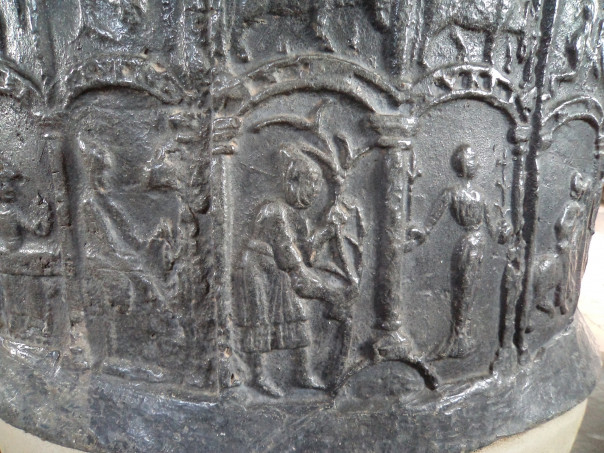
And if all of this wasn’t enough for CKHH, Diane and I are working with Faversham Town Council with Dr Justin Croft on the text for the Faversham Magna Carta and other town charters exhibition. Diane is busy organising her student volunteers’ recruitment campaign for her NHLF-funded Medieval Animals Heritage project, I have a couple of Lossenham Project meetings coming up and other meetings involving Dr Craig Lambert (University of Southampton) and others on Kent’s Maritime Communities – more exciting news on this shortly, and Claire is busy exploring opportunities in relation to Kentish Book Culture.
Consequently, I’m going to end this short but news-packed blog with a rather interesting medieval wall painting at Newington-next-Sittingbourne. This church will feature in my talk next Friday for other matters. However, for now it is the wall painting which shows Our Lady reclining on a couch or childbed while below her Joseph ponders, the painting described as the ‘Dream of Joseph’, that I want to consider. For like St Mary’s parish church at Faversham, this church in Newington is similarly dedicated to Our Lady and St Augustine’s Abbey in Canterbury held the advowson of both. Unlike the painting of a similar Nativity scene at Faversham that is on the west facing side of a pillar in the north transept, the painting at Newington is on the north wall at the western end of the north aisle and thus is not a suitable place for an altar, unlike the one in Faversham. Furthermore, unlike Faversham where there are numerous will bequests to the light of Our Lady of Gesyn [Bethlehem or the Nativity], the lights/images recorded in Newington wills linked to Our Lady are the patronal image, Our Lady of Pity, Our Lady of Grace and the intriguing reference to Our Lady of Walsingham in Newenton, but not Our Lady of Gesyn.
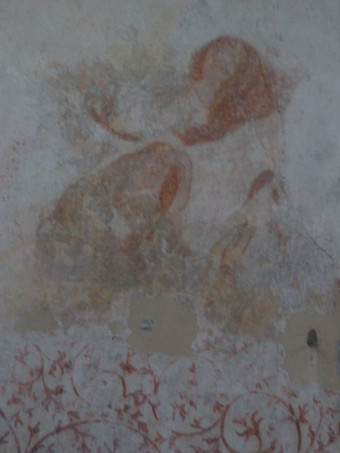
Yet having had a trawl through Testamenta Cantiana this is perhaps not surprising. There are vast numbers of references to parish church lights for Our Lady and to a lesser extent Our Lady of Pity, with fewer again to Our Lady of Grace and then by location in the respective churches, but Our Lady of Gesyn (or by a different spelling) only occurs at six parishes in east Kent, and the only parish I know about for west Kent is West Malling (thanks Sophie Ogilvie!). The east Kent ones in addition to Faversham are Chislet, Cranbrook, Lenham, Lydd and Wye, and so far I’m not sure whether there are links in terms of church patronage or whether this is a reflection of the parishioners’ pious preferences. Also, both Wye and Chislet had a light to the Nativity of Our Lady, while Chislet topped everywhere having a light to Our Lady and Joseph. This included an image, and the chancel was similarly named.
In many ways I’m leaving this out there to see if such lights etc are more widespread and if anyone has examples beyond Kent, I would be interested to know, thanks very much.
 Centre for Kent History and Heritage
Centre for Kent History and Heritage Sheila Sweetinburgh
Sheila Sweetinburgh 1234
1234

